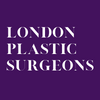Surgical Solutions and Home Remedies for Ectropion
The health of the eye and the overall vision of a person depends on the eyelids and the eyelashes doing their job. Eyelids and eyelashes are responsible for keeping the eyes protected from direct exposure to air and dirt getting into the eyes. If eyelids fail to protect the eyes, then eye health can be significantly impaired.
Mr Mark Gittos is one of the top plastic surgeons in UK for eyelid lift surgery. He has a solid knowledge of face anatomy and aims to help patients achieve their aesthetic goals using different surgical and non-surgical procedures.
Download Mr Mark Gittos’ Guide to Eyelid Lift Surgery – Blepharoplasty
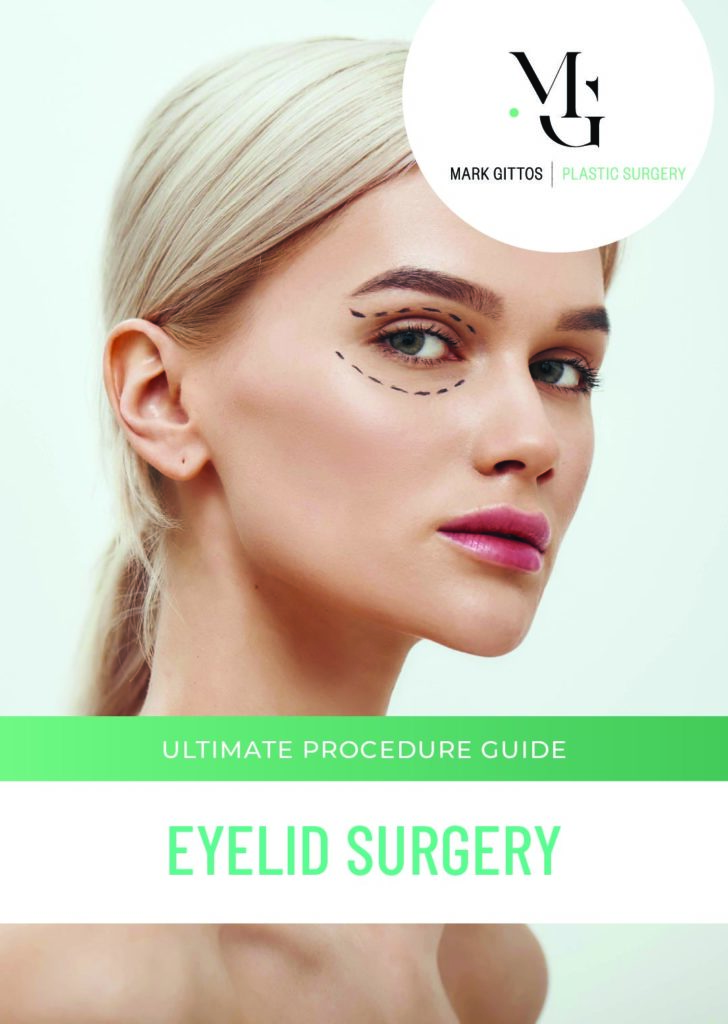
What is an Ectropion?
Ectropion is the drooping of the lower eyelid with outward exposure of the lid. This causes the eye to be exposed to the air for long periods of time because the eyelids don’t close all the way. Exposure to air results in dryness and redness of the eye which can cause a burning sensation in the eye. It can become difficult to perform daily life activities and eventually, the vision can become very poor.
Causes and Risk Factors for an Ectropion
- A weak eyelid can be a sign of muscle weakness. As you age, your eyelid muscles weaken and tendons begin to stretch out. As a result of that, your eyelids can begin to droop. This is one of the common reasons for ectropion development
- There are certain conditions that can paralyse the facial nerves and muscles. Facial paralysis affecting eyelid muscles can cause ectropion. One of the common conditions that cause facial paralysis and ectropion is Bell’s palsy
- A dog bite, for example, can damage your skin, restricting how your eyelid rests against your eye. If you previously had an eyelid surgery such as blepharoplasty, which can also cause ectropion, especially if a large amount of skin was removed during the procedure. Some of the other conditions that increase your risk of developing ectropion are burns and severe damage to the skin due to trauma
- The presence of certain growths, benign or cancerous, can put pressure on your lower lid and push it outwards, resulting in ectropion
- Genetics also plays a role in the development of an ectropion. In certain cases, ectropion can be congenital; however, that is a very rare occurrence. Congenital ectropion is most commonly associated with Down syndrome
There are many causes for ectropion and it is hard to control them. It is important to be on the lookout for the risk factors for ectropion to be able to diagnose the ectropion early on and treat it accordingly.
Some of the common risk factors of ectropion are:
- Age: most people suffer from ectropion after they have reached adulthood
- Past eye surgeries: people who have undergone a significant eyelid surgical procedure are more likely to suffer from ectropion. This is because, sometimes, during these procedures, the surgeon doesn’t address the issue correctly and the skin can start to droop
- Scars, trauma, and burns
Symptoms of Ectropion
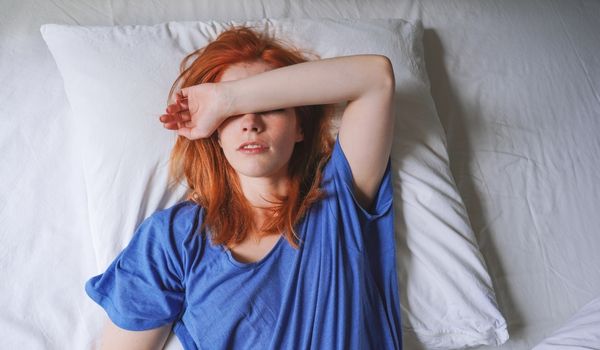
With ectropion, the lower eyelid droops away from the face and the air can dry the eye. On exposure to air, the eyes try to lubricate themselves to avoid excessive dryness. However, due to the droopiness of the eyelid, these lubricative tears don’t have a way to release. This can present as excessive tearing from the eyes.
Some of the common symptoms of ectropion are:
- Irritation
- Redness of the eye
- Sensitivity to light
Some of the red-flag symptoms of ectropion that require immediate medical care are:
- Increasing redness of the eye that won’t resolve even with eye drops
- Sudden photophobia or sensitivity to light accompanied by severe headache
- Vision impairment
Home Remedies for Ectropion
Ectropion’s symptoms can significantly reduce the quality of your life with excessive dryness or excessive tearing. If you are facing these symptoms, some of these home remedies and lifestyle changes may help provide temporary relief and avoid the progression of the condition.
- Use eye lubricants such as hydrating eye drops and artificial tears. You should try to keep the cornea wet, as it naturally is, to avoid any injury to the cornea and subsequent damage to vision
- Avoid rubbing your eyes because of excessive watering. Most people who experience these symptoms tend to rub their eyes from the nose to the outer edge of the eye in a swift motion. Repeating this move several times a day can weaken the muscles and affect tendon laxity. In case of excessive watering, you should wipe from the outer edge towards the nose.
Surgical Treatment of Ectropion: Ectropion Repair Surgery
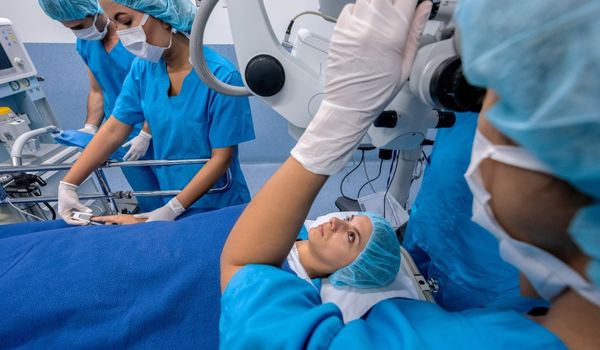
There are two types of repair surgery for an ectropion and the decision between the two types of surgery is made based on the type of ectropion.
- If you have developed ectropion due to muscle weakness and tendon laxity, as a result of ageing, then the lateral tarsal strip procedure would be most beneficial as the type of ectropion repair surgery.
Anaesthesia is needed when this type of surgical intervention is performed. After that, the surgeon will tighten the lower eyelid at the outer corner by suturing the outer part of the lid to the tissue covering the orbit bone. In most cases, your surgeon will also remove a part of the lower eyelid at the outer edge to better tighten it.
With this, your lateral tarsal strip procedure is complete. This procedure is relatively simple and it takes less than an hour to complete.
- If you are undergoing the ectropion repair surgery for an ectropion that developed as a result of scar tissue or previous surgery, then the procedure you will be undergoing is going to require a skin graft.
For this procedure, you can choose between local anaesthesia with intravenous sedation or general anaesthesia. The surgeon will need to remove the scar tissue from your lower eyelid and replace it with a healthy skin graft instead. This will allow your lower eyelid to rest on your eye.
Once the procedure is over, you will need at least 2 weeks to recover before getting back to your daily activities. This procedure is straightforward and takes between 45 minutes to 90 minutes.
Recovery from the Ectropion Repair Surgery
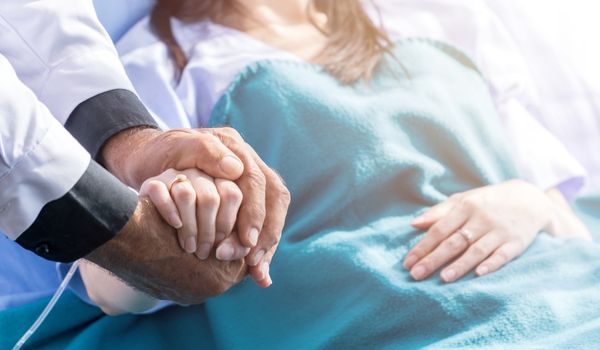
The ectropion repair surgery is considered to be a relatively simple procedure. But the recovery period can be challenging. This is not because of pain or discomfort, which is also present during the time but rather because of the long list of recommendations that you need to follow.
During the first 24 hours of the recovery period, you will need to wear an eye patch. You will also experience significant bruising and swelling during this time for which you will need to apply steroid and antibiotic ointment. This ointment is to be applied throughout the first week of recovery. You should also use cold compresses during this week to help manage bruising and swelling.
Do not smoke during the entire duration of the recovery period which is approximately 2 to 3 weeks. It is also recommended to refrain from alcohol, especially if you have been prescribed antibiotics. There can be blurry vision after the procedure due to which you should also avoid going to work or driving for at least 10 days after the procedure.
It is also important to not perform any strenuous exercise that could raise your blood pressure and eventually, impair the results of your procedure. Similarly, you should avoid getting sweaty as wetting the incisions could complicate and even slow the healing process.
Risks and Complications of Ectropion Repair Surgery
Ectropion repair surgery has certain risks and complications associated with it. Some of the common risks of ectropion repair surgery are:
- Blurred or double vision due to but not limited to ointment used right after the procedure or the anaesthetic agent used during the surgery. Either way, the vision issues only last for a couple of hours or maximum, a couple of days after the procedure. In case of severe persistent burning, you should seek immediate help
- Injury to the cornea, also known as corneal abrasion. The pain will be severe and often requires immediate medical attention. You should call your doctor if you feel a persistent burning sensation in the eyes after the procedure.
- Haematoma is a type of lump that forms under the skin after eyelid surgery due to the collection of blood. Big haematomas need to be drained by the surgeon
- Infections are possible with any surgery and ectropion repair surgery is no exception to this rule. Infections can be treated with antibiotics, both oral and topical
- Asymmetry of results if there was bilateral ectropion
- Scarring or thickening of the graft, if used. Scarring of the normal skin after an ectropion repair surgery without the use of a graft is possible as well, but it almost always happens as a reaction to the infections
- Lumps or bumps in the eyelid
- Scarring or poor results requiring revision surgery
FAQs about Ectropion Repair Surgery
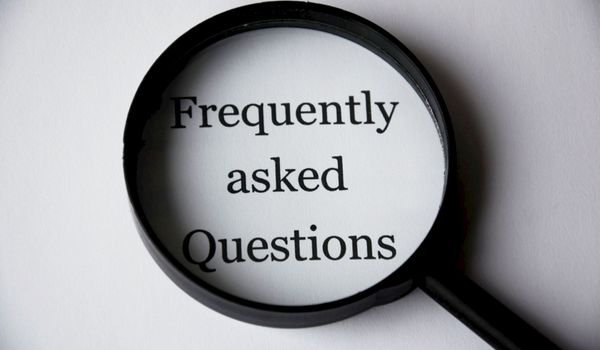
Is ectropion surgery painful?
- The ectropion surgery is performed under local anaesthesia or general anaesthesia. The procedure is focused on correcting the outward appearance of the eyelids and has minimal pain associated with it. During the recovery, the pain is minimal and you might experience a bit of discomfort, all of which will resolve between day 8 and day 10 of the recovery period.
Which is the most commonly performed procedure to repair ectropion?
- The procedure performed for the repair of ectropion depends on the type of ectropion that develops. Involutional ectropion and paralytic ectropion are much more common and are usually treated with horizontal eye tightening. The other type of ectropion – cicatricial ectropion – is not as common and is commonly treated using a lateral tarsal strip procedure with a fat graft or an implant.
Can ectropion be cured?
- Yes, ectropion can be cured with surgery. There are other remedies for the treatment; however, none of them provides a permanent solution. Some types of ectropion are transient and will resolve spontaneously meaning that there is no need for surgery for the cure of ectropion.
Is ectropion serious?
- Ectropion in itself is not serious as it is just the outward drooping of the eyelid. However, if the ectropion is accompanied by vision loss or blurriness, then you should seek medical help as that is a serious condition.
How do you fix ectropion without surgery?
- Ectropion results in overexposure of the eye to the air and that can cause them to become dry. This dryness can cause irritation and itchiness of the eye along with redness of the eye. This can compromise the quality of life of those affected. While the complete treatment of an ectropion that does not resolve on its own is surgery, there are many lubricating agents and topical creams that can help reduce the irritation of the eye.
How long does it take to recover from ectropion surgery?
- Recovery from ectropion surgery takes anywhere between 10 days to 14 days to be complete. However, you can resume your daily life by the end of the first 10 days. During the first ten days, you should refrain from any sort of strenuous exercise that can increase your blood pressure and complicate the results of your procedure.
What happens if ectropion is left untreated?
- Ectropion that is left untreated for a long period of time can worsen the vision. As the ectropion persists, the dryness of the eye will progress, eventually resulting in significantly impaired vision, among other complications.
Can ectropion be temporary?
- In some patients, an ectropion is temporary and often resolved without the need for surgery or any other treatment option. It is not completely understood why transient ectropion develops and how it resolves spontaneously but in some people that does occur.
Read More about Eye Procedures with Dr Gittos
- Five Biggest Mistakes Surgeons Make with Eyelid Surgery
- Cosmetic Surgery for Men UK
- Cosmetic Surgery Recovery Tips
- Eyelid Lift Before and After Photos UK
Medical References about Ectropion Repair
- Ectropion – Diagnosis and treatment – Mayo Clinic
- Ectropion Lower Eyelid Reconstruction – StatPearls – NCBI
- Ectropion – NHS
About Mr Mark Gittos FRACS (Plast) – London Plastic Surgeons
Practice locations in London & Essex, UK and Auckland, New Zealand.
Mr Mark Gittos offers high quality, natural-looking cosmetic surgery results and is highly experienced in Breast, Body and Face Surgery having performed over 4000 Surgeries in the last 26 years.
With world-wide expertise Mr Gittos is an expert in breast, face and body surgery for men & women.
Mr Mark Gittos is a leading Specialist Plastic Surgeon and operates a practice in London UK and Auckland New Zealand. His practice focuses on both surgical and non-surgical procedures, each designed to help restore, improve or change a physical characteristic or problem. The first step in every case is to talk through your personal requirements and explore all the options, before deciding on the most effective solution.
Naturally, before any treatment is begun, we will explain clearly the advantages and risk factors; so that you have the information you need to make an informed decision that is best for you. Visit the practice to find out more.

NEXT STEPS
Do your Research
- Read the Website and Blogs relevant to your procedure
- Browse our Frequently Asked Questions including how to choose a Surgeon for your procedure
- Download the Guides to Surgery
What to Bring to your Plastic Surgeon Consultation
- Bring a friend or relative to help discuss the information and your choices
- Take lots of notes and read the documents provided thoroughly
- Want more information before scheduling your consultation?
Book your Initial Surgery Consultation
- A Referral from your GP or specialist is helpful but NOT essential – you can have a consultation without a GP Referral
- Email us or Call in London on 07557 858156 to arrange your surgeon consultation appointment.
- Book a consultation with Mr Gittos by paying the Consultation Fee
Please contact us to arrange to book a consultation with our Specialist Plastic Surgeon or to speak with our Patient Care Advisor.
Send an enquiry form today or UK phone 07557 858156 during Clinic Hours
